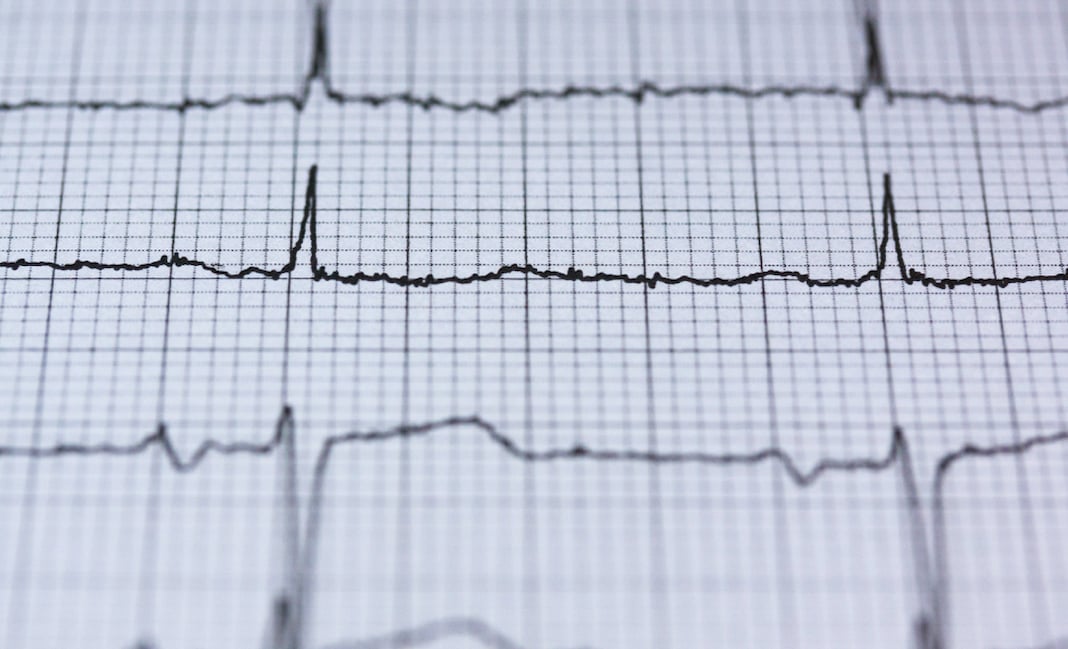Cardiovascular health and metabolic health are deeply intertwined. Chronically high or unstable blood sugar can damage the heart and blood vessels through processes like inflammation and glycation. Because of this, people with Type 2 diabetes are between two and four times more likely to have cardiovascular problems such as heart disease and stroke. In turn, damage to the heart can negatively impact metabolism, creating a dangerous cycle.
Understanding how metabolic health influences heart health is vital because heart disease is the leading cause of death in the United States—and has been for the past century. In fact, nearly one in five deaths in the U.S. is due to heart disease. It’s also the leading cause of death among people with Type 2 diabetes; people with diabetes have the same risk of dying from heart disease as people who have had a heart attack. Besides the toll on human lives, heart disease is costly, too. From 2018 to 2019, it cost the U.S. more than $251 billion.
Here’s a deep dive into how metabolic health affects the heart and the likely mechanisms connecting these two crucial well-being aspects.
What’s included in cardiovascular health?
Cardiovascular disease, which includes heart disease, is an umbrella term that includes several specific diseases of the circulatory system. Many of them are associate with the buildup of plaque—cholesterol and other substances—in arteries, which are vessels that carry oxygenated blood to muscles. Over years and even decades, plaque buildup, or atherosclerosis, causes the arteries to narrow and makes it harder for blood to get through.
The most common type of heart disease is coronary artery disease, associated with plaque buildup in the arteries that supply oxygenated blood to the heart’s muscle. Its most common symptom is chest pain, and it can also lead to arrhythmias and heart failure. Some people don’t even know they have coronary artery disease until they have a heart attack.
Peripheral artery disease is when the heart has trouble pumping blood to the arms and legs due to plaque buildup. Many people have no or mild symptoms, but it can cause leg pain when walking. More than 42% of people with coronary artery disease also have peripheral artery disease.
Another common type of cardiovascular disease is cerebrovascular disease, which occurs when an interruption in blood supply damages the brain. The most common type is stroke, of which there are two main types: Most are ischemic strokes, caused by a blockage in an artery or sometimes a vein, a vessel that carries deoxygenated blood to the heart; the rest are hemorrhagic strokes, which are caused by bleeding in the brain.
Many people think that cholesterol, particularly LDL cholesterol, is the cause of heart disease. Although cholesterol is a significant factor, heart disease is more complicated, and other values on a blood test can offer clues to heart health. High triglycerides can thicken artery walls. High levels of lipoprotein (a) and apolipoprotein B (ApoB), both of which carry cholesterol through the blood, and fibrinogen, a blood protein involved in clotting, are all linked to a higher risk of heart disease. High levels of a protein called N-terminal pro b-type natriuretic peptide (NT-proBNP) indicate that the heart is working harder than it should to pump blood, which is a sign of heart failure. C-Reactive Protein (CRP) is a marker of inflammation that’s also been linked to heart health, including coronary heart disease and ischemic stroke, as well as heart attack (myocardial infarction), blood clots, and atherosclerosis. Researchers have argued that this is because heart disease is itself an inflammatory process.
Arrhythmias, or irregular heartbeats, are separate but related to heart disease. They can be fast, slow, or inconsistent and occur when electrical signaling in the heart goes awry. Some arrhythmias are harmless, but others can lead to stroke, heart failure, or cardiac arrest. Arrhythmias have a wide range of causes, including high blood pressure, coronary artery disease, and injury from heart attack.
Beyond not having atherosclerosis, heart disease, or arrhythmias, a healthy heart means a person can efficiently pump blood throughout their body. Signs of a healthy heart include having a:
- Resting heart rate below 100 beats per minute
- blood pressure below 120/80 mm Hg
- respiration rate of 12 to 18 breaths per minute
- heart rate recovery (how much heart rate decreases after resting for one minute after exercise) of at least 18 beats per minute
- relatively high VO2 max, or the maximum amount of oxygen you can take in during exercise, for your age, sex, and elevation
How are cardiovascular health and metabolic health related?
Poor metabolic health puts you at risk of conditions such as heart disease, stroke, heart attack, and heart failure. The risk is so substantial that guidelines recommend people aged 40 and above who have Type 1 and 2 diabetes take statins (medications that lower cholesterol) regardless of whether they have other risk factors.
For each 1% increase in HbA1c levels—a measure of average blood sugar levels over the past three months—in people with Type 2 diabetes, the risk of dying from heart problems or being hospitalized for heart failure increases by 12%; the risk of having a major cardiovascular event like ischemic stroke or heart attack increases by 8%; and the risk of having heart-related kidney problems increases by 17%, according to a large 2022 study.
Even people with prediabetes have a greater risk of atherosclerosis, heart disease, and stroke compared to the general population. Heart disease risk increases with glucose levels in people with prediabetes. A 2009 study of more than 650,000 Korean men finds that the risk of ischemic stroke increases linearly with a fasting blood glucose level above 5.6 mmol/L (100 mg/dL), the beginning of the glucose range for prediabetes.
A large study in China finds that in people without diabetes, increasingly high levels of non-fasting blood glucose measured at random points in the day have a linear association with cardiovascular disease risk, even within a normal glucose range. Each 1 mmol/L increase in random glucose level above 5.9 mmol/L is linked to an 11% higher risk of dying from heart problems and a 10% higher risk of major coronary events.
Notably, the effects of high blood sugar on heart health can manifest years after a person brings their levels under control.
The role of glycemic variability
Glycemic variability is the swings between highs and lows in blood sugar over the day, like a glucose spike after a meal followed by a reactive crash. Evidence increasingly suggests that high glycemic variability and spikes in blood sugar after eating are more detrimental to blood vessels than high fasting glucose. People with diabetes and the highest glycemic variability have up to a 2.46 times higher risk of developing heart disease compared to those with the lowest variability, according to a 2023 meta-analysis.
As for short-term glycemic variability, a 2016 study finds that in people with Type 2 Diabetes and well-controlled HbA1c, an increase in 72-hour glycemic variability while eating the same diet is linked to an increase in the risk of developing heart disease within 10 years. The risk of having a major cardiovascular event increases by 1.2 times when a person’s day-to-day glycemic variability doubles, according to a 2018 study.
Glycemic index and glycemic load
Other research has looked at the connection even further upstream of glucose readings—in the diet that can often lead to high blood sugar and glycemic variability. Here, too, we see strong correlations to cardiovascular risks, specifically to glycemic index (GI) and glycemic load (GL).
Glycemic index measures how quickly foods with the same amount of carbohydrates raise blood sugar levels. Glycemic load is similar but considers the amount of carbohydrates in a serving of a particular food. A high GI or GL means a food will probably make your blood sugar rise faster.
Not only is following a high-GI or -GL diet linked to diabetes risk, but it’s also linked to an increased risk of various heart problems—and the heart disease risk may be more substantial for women. A 2024 meta-analysis finds that, in general, eating high-GI and -GL foods is linked to a 15% higher chance of developing total cardiovascular disease, which includes cardiovascular disease, coronary heart disease, heart attack, stroke, and death from any of those conditions. The risk of dying from heart disease increases linearly with the GI of a person’s diet.
Over a median of 9.5 years, people with a high-GI diet and pre-existing heart disease have a 1.51 times higher risk of a major cardiovascular event or dying compared to those on a low-GI diet; those who follow a high-GI diet and don’t have pre-existing heart disease have a 1.21 higher risk, according to a large, international study. The research finds similar results for a high-GL diet in people with pre-existing heart disease but not for people without it.
The connection between a high-GI diet and heart problems isn’t just due to the former causing high blood sugar; there are likely additional effects of eating this way that tax the cardiovascular system. For instance, the rapid digestion of carbohydrate-rich foods is associated with low blood pressure and elevated heart rate after eating. These are, in turn, linked to conditions such as heart disease and mini strokes, which are like strokes but are shorter and don’t cause permanent brain damage.
Additionally, more blood flows to the abdominal area after eating high-GI foods, stealing blood from the rest of the body while insulin and other peptides widen blood vessels. This can lead to large swings in blood pressure, which, over time, increase heart disease risk.
Another possible mediator between GI and heart health is incretin hormones. Eating low-GI foods leads to increased levels of GLP-1, a hormone mimicked by drugs like Ozempic that promotes the creation and release of insulin, reduces glucose concentration, and improves the function of blood vessels. Additionally, after eating low-GI foods, the body has lower levels of another hormone called GIP, which promotes fat storage.
Metabolic health and cardiovascular fitness
Beyond heart issues, metabolic health is also related to cardiovascular fitness. Impaired glucose control, for example, is associated with a high resting heart rate and lower VO2 recovery after five minutes of exercise, higher systolic blood pressure, and a measure of arterial stiffness called pulse wave velocity, according to a 2020 study.
A 2018 study of 51 people with overweight or obesity and various levels of glucose tolerance finds that HbA1c accounts for 19% of the variation in VO2 max, and peak VO2 is much lower in those with diabetes.
Additionally, as fasting blood sugar levels increase, a measure of function of endothelial cells, the cells that line blood vessels, decreases. Endothelial cells control the narrowing and widening of blood vessels and help prevent clots that block blood flow. The odds of being in the group with the lowest endothelial function are higher for people with a fasting blood glucose of 95 mg/dL and up compared to those with less than 90 mg/dL.
Poor heart health makes metabolic health worse, too
The relationship works the other way around: Poor heart health also puts metabolic health at risk. A 2022 study finds that at age 55, the remaining lifetime risk of developing Type 2 diabetes is 22.6% for people with ideal cardiovascular health, 28.3% for people with intermediate cardiovascular health, and 32.6% for people with poor cardiovascular health. People who have ideal cardiovascular health but a genetic predisposition for Type 2 diabetes still have a lower risk of developing diabetes compared to people with worse heart health but no genetic predisposition.
Additionally, research suggests that heart failure can negatively affect metabolism and even promote insulin resistance. Heart failure causes this effect in myriad ways, including by over-activating a part of the nervous system that causes tissues to take in less glucose, the liver to create more glucose, and the pancreas to release less insulin. Because poor metabolic health increases heart failure risk, this relationship can become a cycle that seriously damages the heart.
The mechanisms that connect metabolic health and heart health
Several mechanisms and pathways connect metabolic health and heart health. These are some of the most important.
Oxidative stress
Oxidative stress occurs when there are too many reactive oxygen species (ROS)—unstable molecules that contain oxygen and cause damage—in the body and not enough antioxidants to neutralize them. High blood sugar increases ROS production, which some experts think is the leading cause of organ damage from diabetes. Some evidence suggests, however, that oxidative stress is more closely related to glycemic variability than high blood sugar.
Oxidative stress directly contributes to the development of atherosclerosis. ROS oxidize LDL cholesterol, allowing the latter to bind to a specific receptor on endothelial cells. Oxidized LDL impairs the widening of blood vessels, promotes inflammation, and makes it easier for blood clots to form and block vessels. Importantly, oxidized LDL also binds to receptors on immune cells called macrophages that cause them to turn into foam cells, a key ingredient of plaques.
Oxidative stress can also:
- promote the death of endothelial cells (at least in the lab)
- inactivate or suppress nitric oxide, a chemical messenger that regulates blood flow and arteries’ ability to narrow and widen
ROS damage tissues in several ways, including by activating enzymes that promote plaque buildup and promoting the formation of advanced glycation end products (AGEs). AGEs are harmful particles that form when excess glucose binds to proteins, fat, and DNA building blocks called nucleic acids. They’re another central mediator between poor metabolic health and heart issues. Additionally, oxidative stress causes inflammation and is promoted by inflammation, another critical mediator.
Inflammation
Insulin resistance, high blood sugar, obesity, and a high-GI diet are all linked to chronic low-grade inflammation. Experts suspect that, along with oxidative stress, inflammation is the primary way glucose variability contributes to heart problems. After all, atherosclerosis is an inflammatory disease, and the two main factors that contribute to atherosclerosis are 1) the accumulation of oxidized cholesterol, and 2) chronic inflammation in blood vessel walls.
In the early stages of atherosclerosis, endothelial cells experience some amount of inflammation, and oxidized LDL cholesterol further recruits inflammatory cells. In the late stages, a large number of inflammatory cells and proteins called cytokines infiltrate the blood vessel wall and rupture the plaque, leading to bleeding and blood clots that block vessels.
Advanced glycation end-products (AGEs)
When glucose molecules irreversibly bind to proteins, fats, or nucleic acids, they create AGEs. The body makes AGEs by using excess glucose in the blood, and it makes more when blood sugar is high. You can also eat AGEs in food. They’re present in especially high levels in foods cooked at high temperatures, as in broiling and roasting.
AGEs are linked to a long list of conditions, including cancer, Alzheimer’s disease, eye diseases, erectile dysfunction, and, of course, Type 2 diabetes, atherosclerosis, and endothelial dysfunction, a type of coronary artery disease in which large blood vessels on the surface of the heart or elsewhere narrow or suffer other damage. AGEs directly damage blood vessels and the heart by making them stiffer, encouraging the formation of blood clots, and forming molecules that damage their DNA. By binding to AGE-specific receptors on many types of cells, including every type relevant to atherosclerosis, they can even trigger cell death.
Additionally, AGEs increase inflammation and are a major producer of ROS.
Endothelial dysfunction
Endothelial dysfunction increases the risk of atherosclerosis and high blood pressure and can be a precursor to heart disease. It can occur as a result of diabetes. Insulin resistance increases endothelial dysfunction, which then further increases insulin resistance. Insulin resistance can also contribute to endothelial dysfunction.
Endothelial dysfunction mediates the relationship between metabolic health and heart disease by impairing NO production. This chemical messenger widens blood vessels, and a decrease in its levels can cause high blood pressure, inflammation, and stiffer arteries. Additionally, NO combats inflammation, oxidative stress, and clots that block blood flow, so less NO means more of these mechanisms that promote heart issues.
Disrupted balance of cholesterol
Insulin resistance can cause an imbalance of cholesterol in the blood, including a decrease in HDL “good” cholesterol and an increase in triglycerides and a particularly harmful form of LDL cholesterol. Altogether, this increases the risk of atherosclerosis, cardiovascular disease, heart attack, and stroke.
What you can do
In addition to following classic recommendations for good metabolic health and heart health, such as exercising for at least 150 minutes per week and maintaining a healthy weight, the following may help:
- Following a low-GI and low-GL diet
- Following an anti-inflammatory diet
- Eating foods high in antioxidants
- Limiting consumption of foods cooked at high temperatures
- Keeping fasting blood glucose above 4.0 mmol/L (72 mg/dL), but as low as possible above that level, especially below 5.0 mmol/L (90 mg/dL)
Are your habits supporting optimal cardiovascular health?
The best way to understand what lifestyle choices and foods help you achieve optimal metabolic and cardiovascular health is with a platform like Levels, which tracks and analyzes your personal data to deliver custom guidance that helps you build healthy, sustainable habits. Click here to learn more about Levels.









